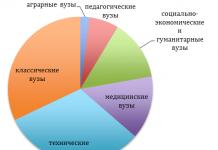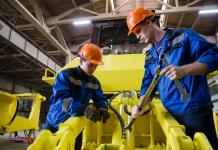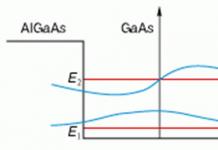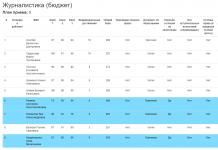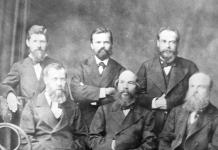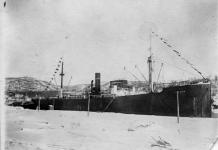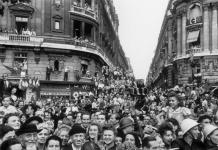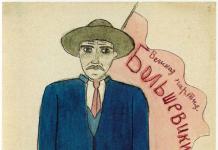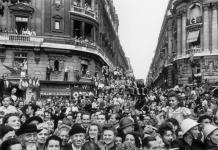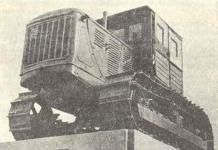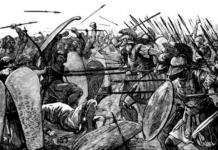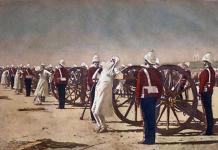We are often nervous, constantly filtering incoming information, reacting to the world and trying to listen to own body, and amazing cells help us in all this. They are the result of a long evolution, the result of the work of nature throughout the development of organisms on Earth.
We cannot say that our system of perception, analysis and response is perfect. But we have gone very far from the animals. Understanding how such a complex system works is very important not only for specialists - biologists and doctors. A person of another profession may also be interested in this.
The information in this article is available to everyone and can be useful not only as knowledge, because understanding your body is the key to understanding yourself.
What is she responsible for
The human nervous tissue is distinguished by a unique structural and functional diversity of neurons and the specificity of their interactions. After all, our brain is a very complex system. And to control our behavior, emotions and thinking, we need a very complex network.
Nervous tissue, the structure and functions of which are determined by a set of neurons - cells with processes - and determine the normal vital activity of the organism, firstly, ensures the coordinated activity of all organ systems. Secondly, it connects the body with the external environment and provides adaptive responses to its change. Thirdly, it controls the metabolism under changing conditions. All types of nervous tissues are a material component of the psyche: signaling systems - speech and thinking, behavioral features in society. Some scientists have hypothesized that man greatly developed his mind, for which he had to "sacrifice" many animal abilities. For example, we do not have the keen eyesight and hearing that animals can boast.
Nerve tissue, the structure and function of which is based on electrical and chemical transmission, has clearly localized effects. Unlike humoral, this system works instantly.
Many small transmitters
Nerve tissue cells - neurons - are structural and functional units nervous system... The neuron cell is characterized by a complex structure and increased functional specialization. The structure of a neuron consists of a eukaryotic body (soma), the diameter of which is 3-100 microns, and processes. The soma of a neuron contains a nucleus and a nucleolus with a biosynthetic apparatus, which forms enzymes and substances inherent in the specialized functions of neurons. These are Nissl's little bodies - tightly adjacent flattened cisterns of the rough endoplasmic reticulum, as well as the developed Golgi apparatus.

The functions of the nerve cell can be continuously carried out due to the abundance in the body of "energy stations" that produce ATP - chondras. The cytoskeleton, represented by neurofilaments and microtubules, plays a supporting role. In the process of loss of membrane structures, lipofuscin pigment is synthesized, the amount of which increases with the age of the neuron. In stem neurons, the pigment melatonin is formed. The nucleolus is made up of protein and RNA, the nucleus is made up of DNA. Ontogenesis of the nucleolus and basophils determine the primary behavioral responses of people, since they depend on the activity and frequency of contacts. Nervous tissue implies the main structural unit - the neuron, although there are still other types of auxiliary tissues.
Features of the structure of nerve cells
The two-membrane nucleus of neurons has pores through which waste substances penetrate and are excreted. Thanks to the genetic apparatus, differentiation occurs, which determines the configuration and frequency of interactions. Another function of the nucleus is to regulate protein synthesis. Ripe nerve cells cannot divide by mitosis, and genetically determined active products of the synthesis of each neuron must ensure functioning and homeostasis throughout the entire life cycle. Replacement of damaged and lost parts can only occur intracellularly. But there are also exceptions. In the epithelium, some ganglia of animals are capable of division.

Nerve tissue cells visually differ in a variety of sizes and shapes. Neurons are characterized by irregular outlines due to processes, which are often numerous and overgrown. These are living conductors of electrical signals by means of which reflex arcs are composed. Nervous tissue, the structure and functions of which depend on highly differentiated cells, whose role is to perceive sensory information, encode it through electrical impulses and transmit it to the rest of the differentiated cells, is able to provide a response. It is almost instantaneous. But some substances, including alcohol, slow it down a lot.
About axons
All types of nervous tissue function with the direct participation of dendritic processes and axons. Axon is translated from Greek as "axis". This is an elongated process that conducts excitation from the body to the processes of other neurons. The tips of the axon are highly branched, each capable of interacting with 5,000 neurons and forming up to 10,000 contacts.
The soma locus from which the axon branches off is called the axonal hillock. It is united with the axon by the fact that they lack a rough endoplasmic reticulum, RNA and an enzymatic complex.
A little about dendrites
This cell name means "tree". Like branches, short and highly branching processes grow from the catfish. They receive signals and serve as loci where synapses arise. Dendrites with the help of lateral processes - spines - increase the surface area and, accordingly, contacts. Dendrites without integuments, while axons are surrounded, has a lipid nature, and its action is similar to the insulating properties of plastic or rubber coating of electrical wires. The point of generation of excitation - the axon mound - arises at the point where the axon leaves the soma in the trigger zone.
The white matter of the ascending and descending pathways in the spinal cord and brain form axons, through which nerve impulses are conducted, carrying out a conductive function - the transmission of a nerve impulse. Electrical signals are transmitted to various parts of the brain and spinal cord, making communication between them. In this case, the executive organs can connect to the receptors. The cerebral cortex is formed by the gray matter. In the spinal canal are the centers of congenital reflexes (sneezing, coughing) and autonomic centers of reflex activity of the stomach, urination, defecation. Intercalated neurons, bodies and motor dendrites perform a reflex function, carrying out motor reactions.

The features of the nerve tissue are determined by the number of processes. Neurons are unipolar, pseudo-unipolar, bipolar. The human nervous tissue does not contain unipolar with one B multipolar - an abundance of dendritic trunks. Such branching does not in the least affect the speed of the signal.
Different cells - different tasks
The functions of a nerve cell are performed by different groups of neurons. By specialization in the reflex arc, there are afferent or sensitive neurons that conduct impulses from organs and skin to the brain.
Interneurons, or associative neurons, are a group of switching or connecting neurons that analyze and make decisions by performing the functions of a nerve cell.
Efferent neurons, or sensory neurons, conduct information about sensations - impulses from the skin and internal organs to the brain.
Efferent neurons, effector, or motor, conduct impulses - "commands" from the brain and spinal cord to all working organs.
The peculiarities of nerve tissues are that neurons perform complex and elaborate work in the body, therefore, everyday primitive work - providing food, removing decay products, the protective function goes to the auxiliary cells of the neuroglia or supporting Schwann cells.
The process of formation of nerve cells
In the cells of the neural tube and ganglion lamina, differentiation occurs, which determines the characteristics of nerve tissues in two directions: large ones become neuroblasts and neurocytes. Small cells (spongioblasts) do not grow and become gliocytes. Nerve tissue, the types of tissue which are composed of neurons, consists of main and auxiliary. Helper cells ("gliocytes") have a specific structure and function.

The central one is represented by the following types of gliocytes: ependymocytes, astrocytes, oligodendrocytes; peripheral - ganglion gliocytes, terminal gliocytes and neurolemmocytes - Schwann cells. Ependymocytes line the ventricular cavities of the brain and the spinal canal and secrete cerebrospinal fluid. Types of nerve tissues - stellate astrocytes form tissues of gray and white matter. The properties of the nervous tissue - astrocytes and their gliosis membrane contribute to the creation of a blood-brain barrier: a structural-functional boundary passes between the liquid connective and nervous tissues.
Tissue evolution
The main property of a living organism is irritability or sensitivity. The type of nervous tissue is justified by the phylogenetic position of the animal and is characterized by wide variability, becoming more complex in the process of evolution. All organisms require certain parameters of internal coordination and regulation, a proper interaction between the stimulus for homeostasis and physiological state. The nervous tissue of animals, especially multicellular ones, whose structure and functions have undergone aromorphoses, contributes to survival in the struggle for existence. In primitive hydroids, it is represented by stellate, nerve cells scattered throughout the body and connected by the finest processes intertwining with each other. This type of nerve tissue is called diffuse.
The nervous system is flat and roundworms stem, ladder type (orthogon) consists of paired cerebral ganglia - clusters of nerve cells and longitudinal trunks (connectives) extending from them, connected by transverse cords-commissures. In rings, the abdominal nerve chain departs from the periopharyngeal ganglion, connected by cords, in each segment of which there are two adjacent nerve nodes connected by nerve fibers. In some soft-bodied, nerve ganglia are concentrated to form the brain. Instincts and orientation in space in arthropods are determined by cephalization of the ganglia of the paired brain, the periopharyngeal nerve ring and the abdominal nerve chain.

In chordates, the nervous tissue, the types of tissues of which are strongly expressed, is complex, but such a structure is evolutionarily justified. Different layers arise and are located on the dorsal side of the body in the form of a neural tube, the cavity is a neurocoel. In vertebrates, it differentiates into the brain and spinal cord. During the formation of the brain, swellings form at the anterior end of the tube. If in lower multicellular organisms the nervous system plays a purely connecting role, then in highly organized animals information is stored, retrieved if necessary, and also provides processing and integration.
In mammals, these swellings give rise to the major regions of the brain. And the rest of the tube forms the spinal cord. Nervous tissue, the structure and functions of which have their own in higher mammals, has undergone significant changes. This is the progressive development of the cerebral cortex and all departments causing complex adaptation to environmental conditions, and the regulation of homeostasis.
Center and periphery
The departments of the nervous system are classified according to their functional and anatomical structure. The anatomical structure is similar to toponymy, where the central nervous system and the peripheral are distinguished. includes the brain and spinal cord, and the peripheral is represented by nerves, nodes and endings. Nerves are represented by clusters of processes outside the central nervous system, covered with a common myelin sheath, conduct electrical signals. Dendrites of sensory neurons form sensory nerves, axons - motor nerves.
The collection of long and short processes forms mixed nerves. Accumulating and concentrating, the bodies of neurons make up nodes that go beyond the central nervous system. Nerve endings are divided into receptor and effector. Dendrites convert stimuli into electrical signals through terminal ramifications. And the efferent endings of axons are in the working organs, muscle fibers, glands. Functional classification implies the division of the nervous system into somatic and autonomous.
Something we control, but something is beyond our control
The properties of the nervous tissue explain the fact that it obeys the will of a person, innervating the work of the support system. The motor centers are located in the cerebral cortex. Autonomous, which is also called vegetative, does not depend on the will of a person. Based on your own requests, it is impossible to speed up or slow down the heartbeat or bowel motility. Since the location of the vegetative centers is the hypothalamus, the autonomic nervous system controls the work of the heart and blood vessels, the endocrine apparatus, and the cavity organs.

The nervous tissue, the photo of which you can see above, forms the sympathetic and parasympathetic divisions that allow them to act as antagonists, having a mutually opposite effect. Excitation in one organ causes inhibition processes in another. For example, sympathetic neurons cause a strong and frequent contraction of the heart chambers, vasoconstriction, surges in blood pressure, since norepinephrine is released. Parasympathetic, releasing acetylcholine, helps to weaken the rhythms of the heart, increase the lumen of the arteries, and lower pressure. Balancing these groups of neurotransmitters normalizes the heart rate.
The sympathetic nervous system acts during times of intense tension, fright or stress. Signals arise in the region of the thoracic and lumbar vertebrae. The parasympathetic system turns on when resting and digesting food, during sleep. The bodies of neurons are in the trunk and sacrum.
Having studied in more detail the features of Purkinje cells, which are pear-shaped with many branching dendrites, one can see how the impulse is transmitted and reveal the mechanism of the successive stages of the process.
The structure of the heart tissue is somewhat different in animals of different species. Of domestic animals in a horse, muscle fibers are laid most compactly, have a ribbon-like shape, lateral bridges are rare, endomysium is poorly developed, blood supply is abundant, myocytes are narrow (10-21 μm) and long (110-130 μm), with large quantity myofibrils, which often lie in the center of cells, pushing long narrow nuclei to the periphery. The transverse striation is clearly visible. In cattle, the fibers are polygonal, myocytes are shorter and wider, lateral bridges are more common, and the number of myofibrils is less than in a horse. They are located on the periphery of myocytes. In a pig, the reticulation of the cardiac muscle tissue is most pronounced, the fibers are rounded, the endomysium is well developed, but the capillaries are less common than in the horse, the myofibrils are smaller, the transverse striation is poorly expressed.
The peculiarity of cardiac muscle tissue is that it, being essentially a symplast and contracting as a whole, at the same time suffers little when individual myocytes are damaged. Cardiac muscle tissue does not have cambial elements and responds to training or injury with physiological hypertrophy of myocytes. Damaged myocytes die and are replaced by connective tissue.
The intensity and frequency of contractions of the heart muscle are regulated by nerve impulses. However, the heart muscle also has its own system of movement regulation. True, without external regulation, the heart rate is halved. The automatism of contractions is ensured by the conductive muscles built from atypical muscle fibers(Purkinje). They consist of large cells with a small number of myofibrils and form the conducting system of the heart, which makes coordinated contraction of the atria and ventricles of the heart, provides a rhythmic change in the working act (systole and diastole) with a recovery period (relaxation of the heart muscle).
Questions for self-control. 1. What is the origin, structure, distribution, features of the functioning of smooth muscle tissue? 2. The origin and structure of striated skeletal muscle tissue? 3. The structure of the muscle fiber. 4. What is a sarcomere, what is its structure and function? 5. What are the features of the structure and functions of the cardiac striated muscle tissue?
Chapter 10. NERVOUS TISSUE
The nervous tissue is highly specialized; the entire nervous system is built from it. In the central nervous system, it forms a gray and white substance
Vrakin V.F., Sidorova M.V. |
MORPHOLOGY OF AGRICULTURAL ANIMALS |
in the brain and spinal cord, in the peripheral - ganglia, nerves, nerve endings. Nervous tissue is able to perceive irritations from the external and internal environment, be excited under their influence, develop, conduct
and transmit impulses, organize responses. The sum of these properties of the nervous tissue manifests itself in the main function of the nervous system: regulation and coordination of the activity of various tissues, organs and systems of the body.
Nervous tissue develops from the neuroectoderm. From it is formed first neural plate and then the neural tube, along which the neural crests (ridges) lie on both sides. All cells of the neural tissue are formed in the neural tube and crests. The structure of the nervous tissue in different parts of the nervous system is very different. Nevertheless, it everywhere consists of neurons and neuroglia. Between them there are intercellular spaces filled with tissue fluid. The intercellular spaces of the brain make up 15-20% of its volume. In the tissue fluid diffusion of substances occurs between the capillaries and cells of the nervous tissue. Neurons are nerve cells capable of producing and conducting nerve impulses. The neuroglia consists of cells that perform auxiliary functions.
The structure and types of neurons. Neuron (neurocyte) - the main structural
and functional unit of nervous tissue (Fig. 32). It distinguishes body
Perikaryon and processes. Neurons of different parts of the nervous system differ from each other in function, shape, size, number and nature of branching of the processes, according to the released mediator. By function, neurons are sensitive (receptor, or afferent), motor (effector, or efferent) and intercalary (associative). The sizes of neurocytes range from 4 microns in cerebellar granule cells to 130 microns (in giant pyramidal cells of the cortex).
Neurons are basically mononuclear cells. The nucleus is large, round, usually located in the center of the cell. The karyoplasm is light, since chromatin does not form large lumps. Contains 1-2 large nucleoli. The Golgi complex is located around the core. There are many mitochondria, microtubules, there is a centrosome, lysosomes. The protein synthesis apparatus is well represented: ribosomes and granular cytoplasmic reticulum. The adsorption of basic dyes on clusters of these organelles forms a characteristic pattern in the form of large lumps, resembling the skin of a tiger (when examined under a light microscope),
for which it is called tigroid (basophilic) substance or Nissl substance (named after the histologist who described it). There are also special orga-nella
Neurofilaments. Bunches of neurofilaments and microtubules (neurotubules), due to the adsorption of dyes on them, are visible in the light microscope in the form of neurofibrils. These organelles are involved in the formation of the cytokeleton, in the movement of substances through the cell and its processes.
Vrakin V.F., Sidorova M.V. |
MORPHOLOGY OF AGRICULTURAL ANIMALS |
Fig. 32. Scheme of the structure of a neuron:
A - at the light-optical level and B - at the ultramicroscopic level:
1 - perikarion; 2 - core; 3 - nucleolus; 4 - dendrites; 5 - axon; 6 - terminal branching of the axon; 7- Golgi complex; 8 - granular endoplasmic reticulum; 9 - mitochondria; 10 - neurofibrils.
The shape of the perikaryon is largely determined by the number of processes. Distinguish between unipolar - with one process, pseudo-unipolar, bipolar - with two processes and multipolar neurons - with several (3-20) processes. The bodies of unipolar and pseudo-unipolar cells are round, bipolar - fusiform, multipolar - various. Processes are a mandatory accessory of neurons. Without them, neurocytes cannot perform their functions, since the processes provide for the conduction of a nerve impulse from one part of the body to another. Their length ranges from a few micrometers to 1-2 m. In terms of morphological and functional properties, the processes are unequal. In a neuron, dendrites and an axon (neurite) are distinguished. There is always one axon in a cell; there can be a different number of dendrites. Excitation spreads along the axon from the body, along the dendrite to the body of the nerve cell. Dendrites, as a rule, are strongly branched and they contain all the organelles that are also present in the cell body. The axon does not branch, but it can give off collaterals - branches running in parallel. There is no basophilic substance in it. Neurofilaments and neurotubules are arranged in order - along the axon. Undifferentiated nerve cells at an early stage of development, when dendrites have not yet formed, are considered unipolar. Among differentiated cells, unipolar neurons are rare.
From the body pseudo-unipolar neuron one process departs, which T-shaped branches into dendrite and neurite. Such cells are common in the spinal nodes (ganglia). These are sensitive neurons, the dendrites of which go to the periphery, where they end in organs with sensitive nerve endings (receptors), and neurites carry excitation from the cell body to the central nervous system. As you can see, these cells in their own

Vrakin V.F., Sidorova M.V. |
MORPHOLOGY OF AGRICULTURAL ANIMALS |
structural and functional properties approach bipolar neurons, which are found in the organ of vision, smell and among associative neurons. The most common are multipolar neurons. These are all motor (motor) and most associative neurons. Among their processes, there is only one axon, and the rest are dendrites. In associative neurons, the axon does not leave the central nervous system, in motor neurons, it goes to the periphery - to the organs (muscles, glands), where it ends with a motor nerve ending.
Nerve cells differentiate early in ontogenesis, lose the ability to divide; normally, their lifespan is equal to the lifespan of an individual. To maintain vital activity and the ability to perform functions for such a long time, a system of intracellular regeneration is developed in neurons. In this case, macromolecules and their ensembles are constantly destroyed and created again. Protein syntheses take place mainly in the cell body. High level the vital activity of the processes is maintained constant by such a cytoplasm in the processes and vice versa.
Plasmolemma of a neuron performs all the functions inherent in it in any cells. In addition, it is capable of excitation during depolarization (decrease in the amount of charge) as a result of the movement of Na + ions into the cell. Depolarization occurs locally (in one place) and moves in waves from the dendrite to the body and axon. With what speed the wave of depolarization moves, with the same speed the nerve impulse is transmitted. Inhibition occurs with the opposite phenomenon: an increase in the membrane charge under the influence of ionic fluxes (O- - into the cell and K + - from the cell). In the nervous tissue, neurons form ensembles characteristic of certain parts of the nervous system. The nature of their location is called cytoarch-
tectonics.
Fig. 33. Synapse:
1 - presynaptic pole; 2 - synaptic vesicles; 3- mitochondrion; 4 - presynaptic membrane; 5 - synaptic cleft; 6 - postsynaptic pole; 7- postsynaptic membrane.
The transmission of a nerve impulse from one neuron to another is carried out in the place of their contact - the synapse (sinapsis - connection) (Fig. 33). Depending on which parts of the neurons come into contact, they distinguish axodendritic(the axon of one neuron contacts the dendrite of another neuron), axosomatic(the axon contacts the body of another neuron) and
Vrakin V.F., Sidorova M.V. |
MORPHOLOGY OF AGRICULTURAL ANIMALS |
axoaxonal(the axons of two neurons are in contact) synapses. Also described dendrosomatic and dendrodendritic synapses. Approximately flat
the fault of the surface of the body of the neuron and almost the entire surface of its dendrites is occupied by synapses.
As a result, each neuron has extensive contacts. So, on one piriform cell of the cerebellum, there are up to 200,000 synapses. Synapses are both excitatory and inhibitory.
All synapses general principles structures: the terminal branches of the axon, which transmits the impulse of the neuron at the site of the synapse, form flask-shaped thickenings - this is presynaptic pole. It contains many mitochondria and synaptic vesicles, which differ in type and size depending on the mediator contained in them - the substance that excites the second neuron. It can be serotonin, acetylcholline, adrenaline and other substances. The section of the second neuron that receives the impulse is called postsynaptic pole. It lacks synaptic vesicles and mitochondria. There is a narrow synap between the two poles.
tic gap (about 20 them), limited contacting membranes of two poles: presynaptic and postsynaptic. These membranes have thickenings and other special structural adaptations that ensure the successful transmission of a nerve impulse in only one direction. A nerve impulse arriving at the presynaptic pole leads to the release of a neurotransmitter into the synaptic cleft. The nervous impulse caused by it - the pulse goes to the second neuron.
Neuroglia fills in the nervous tissue all the spaces between neurons, their processes, blood capillaries. Closely adheres to the listed structures, forming their shells. It performs various functions: supporting, isolating, delimiting, trophic, protective, metabolic, homeostatic. Neuroglial cells - gliocytes
They are called auxiliary cells of the nervous tissue, since they do not conduct a nerve impulse. Nevertheless, their functions are vital, since the absence or damage of the neuroglia makes it impossible for the neurons to function. There are two types of neuroglia: macroglia and microglia.
Macroglia (gliocytes), like neurons, develop from neural tube cells. Among the gliocytes are distinguished: ependymocytes, astrocytes, oligodendrocytes.
Ependymocytes are cubic or cylindrical glial cells with cilia at their apical pole; a long process extends from the basal pole, which permeates the entire thickness of the brain. They fit tightly to each other, lining the walls of the ventricles of the brain and the spinal canal with a continuous layer. The movements of the cilia create a flow of cerebrospinal fluid. In some ependymocytes, secretory granules are found. It is assumed that ependymocytes secrete secretions into the cerebrospinal fluid and regulate its composition.
Vrakin V.F., Sidorova M.V. |
MORPHOLOGY OF AGRICULTURAL ANIMALS |
Astrocytes are the main type of gliocytes in the central nervous system. These are cells with a body diameter of 10-25 microns, with rounded or oval nuclei, with numerous processes diverging in different directions. Distinguish between plasma and fibrous astrocytes. Plasma astrocytes lie in the gray matter of the brain (that is, where the bodies of neurons are located). They have a light cytoplasm, short and thick processes, which, adjoining the bodies of neurons and vessels, partially spread out and take the form of plates. Fibrous astrocytes lie in the white matter of the brain, that is, where the nerve fibers are located. In these cells, the cytoplasm is darker, longer, thinner and weakly branching processes in comparison with plasma astrocytes. They also form extensions in the form of plates on the walls of blood vessels and nerve fibers, delimiting them from each other and at the same time holding them in a certain position. Both types of astrocytes perform support and demarcation functions. There is evidence that they are involved in water metabolism and transport of substances from capillaries to neurons.
Oligodendrocytes- a large and rather diverse group of gliocytes. These are small cells of an angular or oval shape with a small number of short, thin processes. They surround the bodies and processes of neurons, accompanying them all the way to the nerve endings. Their functions are varied. They are involved in the formation of membranes around dendrites and axons, in the nutrition of neurons. With strong excitement, they transfer part of their RNA into the body of the neuron. They are able to accumulate in themselves a large amount of liquid and other substances, maintaining the homeostasis of the nervous tissue. Consequently, oligodendrocytes perform demarcation, trophic and homeostatic functions.
Microglia (glial macrophages) are small cells originating from the mesenchyme and then from blood cells, apparently by transformation of monocytes. Their number is small - about 5% of glial cells. In a resting state, they have an elongated body and a small number of branching processes. When excited, the processes are drawn in, the cells are rounded, increase in volume, acquire mobility and the ability to phagocytosis.
Nerve fibers are processes of nerve cells (axons and dendrites) covered with gliocyte sheaths. In the brain and spinal cord, the sheath of the fibers is formed by oligodendrocytes, in the remaining parts, their variety, called lemmocytes (Schwann cells).
Depending on the structural features, myelinic and nonmyelinated nerve fibers are distinguished. Myelin-free fibers are widespread in the autonomic nervous system and in the gray matter of the brain, myelin fibers in the peripheral (somatic) nervous system and in the white matter. When the fiber is formed, oligodendroglial cells are located along the process of the neuron, tightly adhering to both the process and each other. The process of the nerve cell, which is part of the fiber, is called axial cylinder.
Myelin-free nerve fibers. In the case of the formation of a non-myelinated nerve fiber, the process of the neuron pushes in the place of attachment to the lem-

Vrakin V.F., Sidorova M.V. |
MORPHOLOGY OF AGRICULTURAL ANIMALS |
mocyte its membrane in the form of a groove. As the process descends, the groove becomes deeper, the plasmolemma of the lemmocyte dresses it from all sides in the form of a sleeve. In the end, the axial cylinder, immersed in the lemmocyte, hangs, as it were, in the fold (mesaxon) of its plasmolemma. Mesaxon and lemmocyte plasmolemma surrounding the axial cylinder are visible only through an electron microscope. As a rule, several axial cylinders (3-20) pass in mielene-free fibers. They can be immersed in the lemmocyte at different depths and have different mesaxon lengths. Such fibers are called fibers. cable type. Their thickness is 1-5 microns. Lemmocyte nuclei are located both laterally and in the center of the fiber. The insulation of the axial cylinders inside the cable-type fibers is small, the nerve impulse can diffusely propagate to all the axial cylinders of the fiber. The axial cylinders pass from one myelin-free fiber to another, which also contributes to the propagation of the nerve impulse along the fibers. The speed of passage of a nerve impulse is relatively low - 0.2-2 m / s.
Fig. 34. Diagram of the structure of myelinated nerve fiber:
1 - axial cylinder; 2 - neurilemma:
3 - nuclei and 4- processes of the lemmocyte;
5 - myelin sheath; 6 - nodal interception; 7- inter-node segment.
Myelinated nerve fibers are more complex (Fig. 34). In the center of each myelin fiber, there is an axial cylinder, covered with a myelin sheath. The top layer of the fiber is called neurilemma. The myelin sheath and neurilemma are the constituent parts of the lemmocytes surrounding the axial cylinder. When the myelin fiber is formed, the lemmocytes adjacent to the process of the neuron flatten and twist around the axial cylinder, wrapping it several times. In this case, the cytoplasm is squeezed out of the wound area of the lemmocyte into free areas, and the plasmolemma collapses, sticks together and forms a layer of the myelin sheath. In the process of winding it onto the axial cylinder, the lemmocyte grows, stretches more and more, the number of myelin layers increases. The remaining unwound part of the cell with the nucleus and cytoplasm is on top. This will be neurilemma
Vrakin V.F., Sidorova M.V. |
MORPHOLOGY OF AGRICULTURAL ANIMALS |
(neurrolemma). Lemmocytes are incomparably smaller than the axial cylinder. They are located in the fiber alternately, connecting to each other with finger-like outgrowths. At the point of contact of neighboring lemmocytes, the fiber sharply becomes thinner, since the myelin sheath is absent here and the fiber is covered only with neurilemma - nodal interceptions. Areas of fiber covered by the myelin sheath are called inter-node segments.
Myelin fibers are thicker than myelin fibers. Their diameter is 7-20 microns. The nerve impulse passes through them much faster (5-120 m / s). The thicker the fiber, the faster the impulse travels through it. In accelerating the passage of a nerve impulse, the myelin sheath plays an important role. In the nodal interceptions, the plasmolemma (axolemma) of the axial cylinder is excited, as in myelin-free nerve fibers, as a result of depolarization under the influence of ionic currents. In the area of the inter-nodal segments, the myelin sheath, acting as an insulator, promotes the lightning-fast passage of the nerve impulse, just as it happens in electrical conductor... As a result, the nerve impulse, as it were, jumps from one nodal interception to another and thus moves at high speed.
The myelin-free and myelinated nerve fibers outside the central nervous system are clad with a basement membrane, similar to the basement membrane of the epithelium. In the nervous tissue, nerve fibers form ensembles that are characteristic of a particular part of the nervous system. The nature of the arrangement of nerve fibers is called myeloarchitectonics. In the central nervous system, fibers form paths, on the periphery - nerve
trunks or nerves.
Nerve. Nerve fibers, united by connective tissue, form a nerve, and the thinnest layers of connective tissue located between nerve fibers - endoneurium. It is closely associated with the basement membranes of the fibers, capillaries lie in it. Endoneurium connects nerve fibers in a bundle. The bundles of nerve fibers are dressed with perineurium - wider layers of connective tissue with an ordered arrangement of fibers and with vessels passing through it. Outside, the nerve is covered with epineurium - a fibrous connective tissue rich in fibroblasts, macrophages, and fat cells. In it, the blood and lymphatic vessels and nerves of the nerves branch out.
The nerves include both myelinic and nonmyelinated fibers. There are sensory nerves, formed by dendrites of sensory neurons (sensory cranial nerves), motor nerves, formed by the axons of motor neurons (motor cranial nerves), and mixed ones, which include processes of neurons of different function and structure (spinal nerves). The size of the nerves and their composition depend largely on the size and functional activity of the organs innervated by them. It is noticed that the nerves of the muscles of the dynamic type
from active motor function are composed of thick myelin fibers
from a small amount of myelin-free. The ventral branches of the spinal nerves are also arranged. In the dorsal branches of the spinal nerves

Vrakin V.F., Sidorova M.V. |
MORPHOLOGY OF AGRICULTURAL ANIMALS |
and in the nerves innervating the dynamostatic muscles, thinner myelin fibers and more myelin-free fibers.
Fig. 35. Types of nerve endings:
I - sensitive nerve endings - unencapsulated: A - in the corneal epithelium; B - in the epithelium of the pig's patch; B - in the horse's pericardium; encapsulated: G- phaterpacin's body; D - Meissner's little body; E - a body from a sheep's nipple; 11 - motor nerve endings; Zh - in a cross-striped fiber; 3 - in a smooth muscle cell; 1 - epithelium; 2 - connective tissue; 3 - nerve endings: 4 - Merkel's cell; 5 - discoidal terminal expansion of the nerve ending; 6 - nerve fiber; 7 - bifurcation of the axial cylinder; 8 - capsule; 9 - the nucleus of the lemmocyte; 10 - muscle fiber.
Nerve endings (Fig. 35). The nerve ending is the place of contact of the process of the nerve cell with various structures of a non-nervous nature. These can be muscle fibers, cells of the glandular or integumentary epithelium, etc. Depending on the functional orientation, sensory (receptor, afferent) and motor (effector, efferent) nerve endings are distinguished.
Sensory nerve endings - receptors are formed by the final branching of the dendrites of sensitive neurons and perceive irritations coming to them from different parts of the body or from the outside. They are scattered throughout the body. Depending on where the receptors get irritated from, they are divided into exteroreceptors, perceiving irritations from the external environment, proprioceptors, carrying excitations from the organs of motion, and interoreceptors, perceiving irritations from internal organs.
Receptors are sensitive only to certain types of stimuli. In this regard, mechano-, thermo-, photo-, baro-, chemo- and other receptors are distinguished. The most common mechanoreceptors. They are present in the skin, muscles, and internal organs. Pain sensations are perceived both by pain receptors and, apparently, by any other receptor.
Vrakin V.F., Sidorova M.V. |
MORPHOLOGY OF AGRICULTURAL ANIMALS |
ramis when they are excessively irritated. By structure, receptors are divided into free and non-free. Non-free receptors, in turn, are encapsulated and non-encapsulated.
Free nerve endings formed only by the terminal ramifications of dendrites, which are not covered with anything, and in the form of bushes, glomeruli, loops, rings are located between the cells of the innervated tissue. Most often, free nerve endings are found in the epithelium and connective tissue. There are many of them in the epidermis of the nasal mirror in sheep and horses, in the nasolabial mirror in the cow, around the hair follicles. They have a variety of sensitivities.
Non-free nerve endings are the terminal branches of the dendrite, surrounded by special receptor cells. Unencapsulated nerve endings are a type of non-free receptor in which the branches of the axial cylinder (dendrite) are surrounded by epithelial or glial cells. Such nerve endings are well developed in the pig's patch. These are tactile menisci (Merkel discs) in which the terminal branches of the dendrite are entwined with special cells in the stratified epithelium that are sensitive to touch and pressure.
Encapsulated nerve endings arranged the most complex. IN
them, the axial cylinder is surrounded not only by glial cells, but also by a connective tissue capsule. There are many types of encapsulated nerve endings: tactile bodies (Meissner) -tactile receptors, lamellar bodies (Fatera-Pacini) -baroreceptors, bulbous bodies (Golgi-Mazzoni), genital bodies (Dogel), end-flasks (Krause) muscle spindles, etc. The lamellar body (Fatera-Pacini) and the neuromuscular spindle have been studied better than others.
In the lamellar body, the terminal branches of the dendrite (telodendria) are surrounded by glial cells, which, spreading out and densely layering on top of each other, form inner flask(onion). The inner flask is covered with layers of spread out fibroblast-like cells, which together form outer capsule calf. Between the inner bulb and the outer capsule, and near the nerve endings, there is a space in which sensitive process (ciliary) cells are found. Lamellar bodies react to any changes in pressure in tissues (pressure of fluids, when supported, pressed, hit, etc.), while coding the direction, frequency of the irritating stimulus and the type of its energy. They are very common in the body - they lie in the connective tissue of the organs of the musculoskeletal system, internal organs, blood vessels, nerve trunks, they are found in the lymph nodes, autonomic ganglia, and endocrine glands. Their number and size vary depending on age, location and frequency of excitation (0.1-6 mm).

Vrakin V.F., Sidorova M.V. |
MORPHOLOGY OF AGRICULTURAL ANIMALS |
Other encapsulated receptors are built on the same principle, differing in the nature of the branching of the axial cylinder, the number and arrangement of the plates in the inner flask and capsule. Structural features determine the nature of the sensitivity of a particular nerve ending. In the striated muscle tissue, the branches of the axial cylinder braid from above a group of modified muscle fibers, forming a kind of spindle. From above, the neuromuscular spindle is covered with a connective tissue capsule.
Motor nerve endings - effectors in smooth muscle tissue and glands are usually built like free nerve endings. In striated muscle tissue, they have a complex structure and
are called neuromuscular synapses, or motor plaques. Come on-
For a muscle fiber, the nerve fiber changes. Its axial cylinder, which is the axon of the motor neuron, branches into terminals, which are pressed into the muscle fiber and form a contact with its plasmolemma, similar to a synapse. Plasmolemma of the axon at the point of contact is presynaptic membrane neuromuscular synapse, plasmolemma of muscle fiber - postsynaptic. Between them is synoptic gap about 50 nm wide. The basement membranes of the nerve and muscle fibers connect, passing one into the other and cover the motor plaque on top. The plasmolemma of the muscle fiber forms numerous folds at the point of contact. It is assumed that the rate of muscle contraction is associated with their development. One motor neuron (and its axon), together with the muscle fibers innervated by it, creates a motor unit - the myion. The strength of muscle contraction depends on how many motor units are involved in the contraction.
Fig. 36. Reflex arc:
1 spinal cord; 2 - dorsal and 3 - ventral horn of gray matter; 4- spinal ganglion; 5 - sensitive and 6 - motor roots of the spinal nerve; 7 - mixed spinal nerve; 8 - leather; 9 - muscle; 10 - sensitive nerve ending: 11-dendrite; 12 - body and 13 - axon of a sensitive neuron; 14 - insertion neuron and its (15) axon; 16 - motor neuron and its (17) axon; 18 - motor nerve ending.
It includes from 3 to 2000 muscle fibers. Muscle fibers belonging to one motor unit are distributed throughout the muscle. As a result, when a small number of neurons are excited, the entire muscle contracts, and not just any part of it.
Vrakin V.F., Sidorova M.V. |
MORPHOLOGY OF AGRICULTURAL ANIMALS |
Reflex arc (fig. 36). Excitation in the nervous tissue and in the nervous system does not spread chaotically, but along certain paths - reflex arcs. The reflex arc is formed by a sensitive, one or more associative and motor neurons. Excitation in the reflex arc always goes in a strictly defined direction: from the receptor (sensory nerve endings) along the centripetal process of a sensitive neuron (usually a dendrite) to its body, located in the ganglion (nerve node), from where along its centrifugal process (axon) - to the dendrite associative neuron. A synapse is formed between the axon of the sensitive neuron and the dendrite of the associative neuron, which passes the nerve impulse in only one direction: from the presynaptic pole to the postsynaptic one. The nerve impulse sequentially passes to the dendrite, body and axon of the associative neuron, and from there
Through the synaptic connection to the dendrite, body and axon of the motor neuron. Associative neurons with processes, dendrites and motor neuron bodies are located in the central nervous system. The axons of motor neurons leave it and go to the innervated tissues and organs, where their terminal ramifications form motor nerve endings - effectors. Receptor irritation (for example, pressure on the skin excites lamellar
corpuscles) leads to a wave of excitation, which travels along the reflex arc and, having reached the effector, organizes a response called a reflex. (In our example, muscle contraction in response to pressure and, as a consequence, movement.)
Age-related and reactive changes in the nervous tissue. The new
In newborn animals, the structural elements of the nervous tissue are differentiated to such an extent that they can perform all the functions inherent in the nervous system (especially in mature ungulates): reception, integration of the receptor signal, transmission of a nerve impulse, secretion of a transmitter into the synaptic cleft, and the organization of an effector reaction. Nevertheless, in the postnatal period of ontogenesis, there is an increase in the size and complexity of the structure of neurons, which, apparently, is associated with the specifics of their functioning. The sizes of bodies and nuclei of neurons proportionally increase, basophilic substance accumulates. In sheep, an increase in its quantity was traced up to 3 years of age, and from 5-6 years - an age-related decrease. The myelin sheath and the size of the lemmocytes that form this membrane thicken.
Questions for self-control. 1. What is the origin and principles of the structure of nervous tissue? 2. What is a neuron, what are neurons in structure and function? 3. What is a synapse, its types and structure? 4. What neuroglial cells do you know, how do they differ from each other? 5. What is a nerve fiber, how is it arranged, what is the difference and where are myelinated and nonmyelinated fibers found? 6. What is a nerve ending? 7. Classification and structure of nerve endings. 8. The composition of the reflex arc.
Vrakin V.F., Sidorova M.V. |
MORPHOLOGY OF AGRICULTURAL ANIMALS |
Section four. MORPHOLOGY OF ORGANS AND THEIR SYSTEMS
Chapter 11. GENERAL PRINCIPLES OF BUILDING AND DEVELOPING THE ORGANISM
Modern morphology, standing on the positions of dialectical materialism, considers the organism - the object of its study - as a single whole, all parts of which are interconnected, interdependent and interdependent. In addition, the organism is considered not in statics, but in the process of its growth and development (in ontogeny), in the light of evolutionary transformations (in phylogeny), depending on the living conditions and the influence of functions.
Such a comprehensive approach to (The study of the organism with the help of a number of sciences and directions included as constituent parts of morphology, gave the basis to V. A. Dombrovsky (1946) to define it as an integral morphology. Consequently, an organism is a living, integral, existing independently, a historically formed system, which has its own special structure and development, due to hereditary properties, the interaction of its parts and the influence of the environment.The organism consists of organs combined into systems and apparatuses that provide all manifestations of its life: reactivity, metabolism, reproduction, growth and development ...
Organ (organon - tool) - a part of the body, built of regularly interconnected tissues; has a specific shape, occupies a specific position in the body and performs a specific function. Organs of the same origin, similar structure, as a rule, morphologically closely related and interdependent, perform a common function, constitute an organ system, for example, nervous, vascular, bone, muscular and other systems. Organs providing a certain life process, but having a different structure and origin, are combined into an apparatus. For example, the apparatus of movement, digestion, respiration, blood, lymph formation, etc. Organ systems can be included in the apparatus as their component.
Organ systems and apparatus, depending on their morphological and functional characteristics, are divided into three groups: somatic, visceral and integrating. IN somatic group includes the skeleton, muscles (combined in the movement apparatus) and organs skin... They form the soma - the walls of the body. IN visceral (splanchnic) group in-
they feed the digestive, respiratory and genitourinary apparatus. Together, they make up the insides (Greek splanchna, Latin viscera), located mostly in the natural cavities of the body. IN group of integrating systems includes the endocrine, cardiovascular and nervous systems with sensory organs. The cardiovascular system permeates all organs and tissues of the body (with rare exceptions), performs a transport function and unites all systems. Through it, humoral regulation is carried out. The nervous system regulates and coordinates the activity of all systems, including the vascular, ensuring the harmonious integrity of the organ-
Vrakin V.F., Sidorova M.V. |
MORPHOLOGY OF AGRICULTURAL ANIMALS |
nism and its adequate connection with the environment with the help of the senses.
All chordates are characterized by the same principles of body construction: a) bipolarity (uniaxiality) - the body has two poles - head (cranial) and caudal (caudal); b) bilaterality - bilateral symmetry - the right and left sides of the body are mirror images of each other; c) segmentation (metamerism) - nearby segments are close to construction; d) four-legged (tetrapody); e) the location of the majority of unpaired organs along the main axis of the body.
The direction of the gravity forces of a four-legged animal coincides with the anatomical boundaries dividing the skeleton into its natural sections: skull, cervical, thoracic, lumbar, sacral and caudal, and on the extremities it passes through the extremities (belt, stylopodia, zeigopodia, autopodia). The general center of gravity passes through the liver, which in cattle corresponds to the level of the 11th thoracic vertebra.
The relationship of the body with the environment. The body cannot exist apart from the environment, since it constantly exchanges matter and energy with it. The organism responds to changes in the external environment with adaptive reactions. However, they are not unlimited and are always within the normal range of a given reaction.
The reaction rate is the limits of the body's ability to respond by changing its morphological and physiological properties to changes in the environment without disturbing the main morphological and functional systems.
The most common variant of the structure of the body is considered the norm of the structure. Animals of different species, sex, age, constitution have their own structural norms that distinguish them from other groups (age, sex, etc.). So, young ungulates are characterized by relative high legs, and adults - by elongation of the body. The norm of the structure is fixed in the genotype more rigidly than the physiological norm. Consequently, structural changes under the influence of the environment will be less pronounced than functional ones. But the structures are also genetically determined to varying degrees. So, the size of the head, the length of the tubular bones, the shape of the muscles are more determined by the genotype than, for example, the size of the lower back, the thickness of the tubular bones, the mass of the muscles. The individual variability of the organism and organs, if it does not disturb their vital activity, is within the normal range of reaction and structure. If changes in the environment exceed the adaptive capabilities of the body, pathology develops, which is expressed in diseases, deformities, premature death, etc.
Ontogenesis as a dialectical process. The organism naturally changes during the entire period of its existence. The process of individual development - ontogenesis - begins with the appearance of the zygote and ends with the death of the organism. The development of an organism is a dialectical process, that is, a process in which contradictory phenomena are interconnected and interdependent. Inconsistency is inherent in ontogeny - this is his driving force... So, the contradiction of heredity and variability of the op-
Vrakin V.F., Sidorova M.V. |
MORPHOLOGY OF AGRICULTURAL ANIMALS |
thinns the entire course of individual development; assimilation (anabolism) and dissimilation (catabolism) are inextricably linked in the course of metabolism (the energy released during catabolism is spent in the process of anabolic synthesis); the interaction between dying and nascent structures, between progressive and regressive processes is observed at all stages of development (the appearance of daughter cells on the basis of the maternal one, bone formation in place of resorbing cartilage, etc.).
The development of an individual is a reflection of the development of a species, which was formulated by E. Haeckel in the form of a biogenetic law, which states that ontogeny repeats phylogeny. C. Darwin in 1842 wrote that the embryo is, as it were, a witness to the past centuries through which the species passed. A. N. Severtsov supplemented and expanded this provision, showing that ontogeny is not only the result, but also the basis of phylogenesis, since phylogeny is a series of ontogenesis and changes occurring in the genotype of an individual, transmitted to offspring, affect the direction of phylogenesis. Changes in the development of an individual that occur under the influence of the environment are considered adaptive. The severity of the changes depends on the individual reactions of the organism, and then natural selection begins to act, preserving the individuals whose changes turned out to be the most adaptive, increased their viability, promoted active reproduction, etc. The wider the norm of reaction and structure, the wider the geno- and phenotypic variability , the greater the possibility of morphofunctional adaptation, and, consequently, the prosperity and evolution of the species. The influence of the external environment on the morphofunctional organization of an animal is clearly seen in the process of domestication: in red foxes, after several generations, polyesterity, variegated coat color appear, behavior changes, the ability to wag its tail appears; in sheep, the length and structure of the gastrointestinal tract, the quality of the wool, change.
Ontogenesis is carried out according to a certain plan: pigs are born in a pig, from which pigs grow, and not, say, barks. The regularity and direction of ontogenesis are determined by the genetic program, the mutual influence of parts of the organism in the process of development and functioning, and the completeness of its implementation depends on the influence of the external environment and is manifested in the phenotype.
The interaction of parts of the body is accomplished by regulation and occurs at all levels - from molecular to systemic. Regulatory processes are always based on the principle of negative feedback and are self-regulating: the regulated body by the accumulation of the products of its activity suppresses the activity of the regulator. At the cell level, regulation is carried out through cellular metabolism and intercellular interactions. At the organ and organism level - with the help of the endocrine and nervous systems.
Vrakin V.F., Sidorova M.V. |
MORPHOLOGY OF AGRICULTURAL ANIMALS |
Growth and differentiation are two sides of a single developmental process. Individual development (ontogeny) includes qualitative (differentiation) and quantitative (growth) sides.
Differentiation, or differentiation, is the emergence in the process of development of the organism of biochemical, morphological and functional differences between cells, tissues and organs. As a result, the whole is divided into parts, various cells, tissues, organs are formed and acquire specialization. In the ontogeny of multicellular animals, specialization occurs at the stage of several blastomeres. In the process of differentiation, organelles, cells, tissues, organs acquire specific structural features and their inherent function. It turns out that the more specialized a part of the body is, the more it depends on other parts.
R about with t - an increase in the mass and size of the body and its parts, organically associated with formative processes. In biology, until now, there is no unified theory of growth, although the process itself is well studied in animals. different types, classes, types. Growth is a quantitative indicator of changes in structures, therefore, it is easier to express it in mathematical form than other characteristics of ontogeny. The growth patterns in animals of different species and even in one animal at different stages of ontogeny are not the same.
The vast majority of warm-blooded animals (except rats), having reached a certain size, stop growing. This growth is called limited. Most cold-blooded chordates (including fish) are characterized by unlimited growth. These animals grow throughout their lives.
Growth and differentiation are interconnected in an inverse relationship: the more differentiated the organism, the lower the rate of its growth. The highest growth rate is observed in the embryo, less in the fetus, even less after birth, and with the achievement of physiological and morphological maturity, growth stops. Consequently, in ontogeny, there is a constant decrease in the growth rate. However, this decrease is uneven, since the periods of active growth and differentiation alternate, as a result of which growth has the character of dying fluctuations, and differentiation also increases stepwise until the period of morphofunctional maturity.
In different animals, the growth rate and duration are not the same, and there is an inverse relationship between these growth indicators: the faster the growth rate, the shorter its duration, and vice versa. Birds have a particularly high growth rate and short duration. In mammals, a relationship has been noted between the size of the animal, the speed and duration of growth. Species of small animals usually grow intensively, but not for a long time; species of large animals grow less intensively, but for a long time. The body weight that a particular species reaches is not random, but is determined by the relationship between the surface of the body, its volume, the surface of the intestinal mucosa and the intensity of metabolic processes. These relationships place strict limits on the size of the animal. If the body does not change shape during growth, such growth is called
Vrakin V.F., Sidorova M.V. |
MORPHOLOGY OF AGRICULTURAL ANIMALS |
proportional. It is characteristic only for the earliest stages of cleavage of the embryo and in the period close to the completion of growth (from puberty to morphophysiological maturity). All other periods are characterized by disproportionate growth, when some organs grow faster than others. At the same time, the proportions of the body, the ratio of tissues in organs change.
Uneven growth is determined by the time of organ laying (some organs are laid early, for example, the eyes, the brain, others much later - the intestines, muscles), the size of the bookmark (in the eyes, brain - more, in the lungs, muscles - relatively less), the timing and duration of histological differentiation ... If an organ has a large anlage and this anlage is formed early, such an organ is characterized by a slow rate of embryonic and postnatal growth (eye, brain). In addition, such organs are genetically highly determined, that is, their morphological development is determined mainly by the genotype. If the anlage of an organ is formed late, but its histological differentiation proceeds quickly, such an organ is characterized by rapid embryonic and short postnatal growth (for example, the liver). If the anlage of an organ is formed late, and its histological differentiation is slow, such an organ is characterized by rapid embryonic and long postnatal growth (apparatus of movement, reproduction). Moreover, the later the organ is laid, the more its development depends on environmental conditions. And since bones, muscles and skin are one of the most late differentiating organs, this gives the animal engineer the key to control the formation of meat and wool production.
Periodization of development. In the process of individual development, certain stages are distinguished when, as a result of increasing quantitative changes, the organism passes into a new qualitative state. The periods of intrauterine development have been traced by us in the section "Embryology". In postnatal ontogenesis, there are periods of neonatal, milk, growth and development of young animals, puberty, morphophysiological maturity, the flowering of functional activity (adult state), aging. In the process of individual development, there are critical periods when certain organs are most sensitive to external influences. It turned out that the critical period for an organ is the time of its most intensive growth, as well as the moments of periodic (rhythmic) increases in the growth rate during ontogenesis. In rhythm, the uneven nature of growth is manifested. Yearly rhythms associated with the changing seasons have long been known. In wild animals, and from domestic animals in reindeer, camels, growth stops in winter and resumes in the warm season. Circa monthly, circadian and circadian rhythms were found in all mammals, as well as 12-day cycles of activity and growth decay in calves and chickens. The use of differentiated feeding in accordance with the detected rhythms made it possible to increase productivity by 20-30% with a 20% savings in feed. Knowledge of growth patterns

Vrakin V.F., Sidorova M.V. |
MORPHOLOGY OF AGRICULTURAL ANIMALS |
and their use in the practice of animal husbandry makes it possible to control not only the processes of animal growth, but also its development as a whole, which is one of the reserves for the intensification of animal husbandry.
BODY PLANES AND TERMS FOR DESIGNATION OF ORGAN POSITION
For a more accurate determination of the location of organs and parts, the body of the animal is dismembered by three imaginary mutually perpendicular planes - sagittal, segmental and frontal (Fig. 37). Median sagittal The (median) plane is drawn vertically along the middle of the animal's body from the mouth to the tip of the tail and dissecting it into two symmetrical halves. The direction in the body of the animal to the median plane is called medial, and from it - lateral (lateralis - lateral).
Fig. 37. Planes and directions in the body of the animal.
Planes: I - segmental; II - sagittal; III - frontal. Directions: 1 - cranial; 2 - caudal; 3 - dorsal; 4 - ventral; 5 - medial; 6 - lateral; 7 - rostral (oral); eight
Aboral; 9 - proximal; 10 - distal; 11 - dorsal (dorsal, dorsal); 12 - palmar; 13 - plantar.
Vrakin V.F., Sidorova M.V. |
MORPHOLOGY OF AGRICULTURAL ANIMALS |
Segmental plane is carried out vertically across the body of the animal. The direction from it towards the head is called cranial (cranium
Skull), towards the tail - caudal (cauda - tail). On the head, where everything is cranial, since the direction to the nose - nasal or proboscis -
rostral and the opposite is caudal. Frontal flat
bone (Irons - forehead) is carried out horizontally along the body of the animal (with a horizontally extended head), that is, parallel to the forehead. The direction in this plane towards the back is called dorsal (dorsum - back), towards the stomach - ventral (venter - stomach).
To determine the position of the extremities, there are the terms proximus (proximus) - a closer position to the axial part of the body and distal (distalus - distant) - a more distant position from the axial part of the body. To designate the anterior surface of the limbs, the terms cranial or dorsal (for the paw) are adopted, and for the posterior surface - caudal, as well as palmar or volar
(palma, vola - palm) - for the hand and plantar (planta - foot) - for the foot.
SECTIONS AND AREAS OF ANIMAL BODY AND THEIR BONE BASIS
The body of vertebrates is divided into an axial part and limbs. In fish, the axial part consists of the head, body and tail. Starting with amphibians, in animals, the axial part of the body is divided into the head, neck, trunk and tail. The neck, torso and tail together make up the trunk of the body. Each of the body parts, in turn, is divided into sections and regions (Fig. 38). In most cases, they are based on the bones of the skeleton, which have the same names as the regions.
The head (Latin caput, Greek cephale) is divided into a skull (cerebral section) and a face (facial section).
The skull (cranium) is represented by the following areas: occipital (occiput), parietal (crown), frontal (forehead) with the horn area in cattle, temporal (temple) and parotid (ear) with the auricle area.
On the face (fades), there are areas: orbital, (eyes) with the areas of the upper and lower eyelids, infraorbital, zygomatic with the area of the large chewing muscle (in a horse - ganache), intermaxillary, chin, nasal (nose) with the area of the nostrils, oral (mouth ), which includes the areas of the upper and lower lips and cheeks. Above the upper lip (in the area of the nostrils) there is a nasal speculum; in large ruminants, it extends to the area of the upper lip and becomes nasolabial.
The neck (cervix, collum) extends from the occipital region to the scapula and is divided into regions: the upper cervical, lying above the bodies of the cervical vertebrae; lateral cervical (area of the brachiocephalic muscle), running along the vertebral bodies; the lower cervical, along which the jugular groove stretches, as well as

Vrakin V.F., Sidorova M.V. |
MORPHOLOGY OF AGRICULTURAL ANIMALS |
laryngeal and tracheal (on its ventral side). In ungulates, the neck is relatively long due to the need to feed on pasture. Therefore, they also have a direct correlation between the length of the limbs and the length of the neck. The longest neck in high-legged, fast-paced horses. The shortest is in the pig. The shape of the neck in herbivores is oval, elongated in the dorsoventral direction, in a pig (omnivore) it is more rounded.
Fig. 38. Body areas of cattle:
1 - frontal; 2 - occipital; 3 - parietal; 4 - temporal; 5 - parotid; 6 - auricle; 7 - nasal; 8 - areas of the upper and lower lips; 9 - chin; 10 - buccal; 11 - intermaxillary; 12 - infraorbital; 13 - zygomatic; 14 - eye area; 15 - large chewing muscle; 16 - upper cervical; 17 - lateral cervical; 18 - lower cervical; 19 - withers; 20 - backs; 21 - costal; 22 - pre-sternal; 23 - sternal; 24 - lumbar; 25 - hypochondrium; 26 - xiphoid cartilage; 27 - peri-lumbar (hungry) fossa; 28 - side area; 29 - inguinal; 30 - umbilical; 31 - pubic; 32 - maklok; 33- sacral; 34 - gluteal; 35
- tail root; 36 - sciatic region; 37 - scapula; 38- shoulder; 39
- forearm; 40 - brush; 41- wrist; 42 - metacarpus; 43 - fingers; 44 - thigh; 45 - shin; 46 - foot; 47 - tarsus; 48 - metatarsus.
The trunk (truncus) consists of the thoracic, abdominal and pelvic regions. The thoracic region includes the areas of the withers, back, lateral costal, pre-sternal and sternal. It is durable and flexible at the same time. In the caudal direction, the strength decreases, and the mobility increases due to the different degrees of development of the bones of the skeleton and the peculiarities of their connection. The bones of the withers and back are the thoracic vertebrae. In the region
Vrakin V.F., Sidorova M.V. |
MORPHOLOGY OF AGRICULTURAL ANIMALS |
These withers have the highest spinous processes. The higher and longer the withers, the larger area the attachment of the muscles of the spine and the girdle of the thoracic limb, the more sweeping and more elastic the movement. There is an inverse relationship between the length of the withers and back. The longest withers and the shortest back are in a horse, in a pig - on the contrary.
The abdominal region includes the lower back (lumbus) and the abdomen (abdomen), or belly (venter), therefore it is also called the lumbar-abdominal region. Loin - an extension of the back to the sacral region. It is based on the lumbar vertebrae. The abdomen has soft walls and is divided into a number of areas: the right and left hypochondria, xiphoid cartilage, the upper border of which runs along the costal arch; paired lateral (iliac) with a hungry fossa, adjacent to the bottom of the lower back, in front of the last rib, and behind it passes into the groin; umbilical, lying below the abdomen behind the region of the xiphoid cartilage to the front of the pubic region. The mammary glands are located on the ventral surface of the xiphoid cartilage, umbilical and pubic regions of females. The horse has the shortest loin and the less extensive abdominal region. Pigs and cattle have a longer loin. The most voluminous abdominal region in ruminants.
The pelvic region (pelvis) is divided into areas: sacral, gluteal, including the umbilical, ischial and perineal with an adjacent scrotal region. In the tail (cauda), a root, a body and a tip are distinguished. The areas of the sacral, the two gluteal and the root of the tail in the horse form the croup.
The limbs (membra) are divided into chest (front) and pelvic (back). They consist of belts, which are connected to the trunk of the body, and free limbs. The free limbs are divided into a main support post and a leg. The pectoral limb consists of the shoulder girdle, upper arm, forearm and hand.
Shoulder girdle areas and the shoulder is adjacent to the lateral thoracic region. The bony base of the shoulder girdle in ungulates is the scapula, therefore it is often called the scapula region.
The shoulder (brachiuni) is located below the shoulder girdle, in the shape of a triangle. The humerus is the bone base.
The forearm (antebrachium) is outside the cutaneous trunk sac. Its bone base is the radius and ulna.
The hand (marius) consists of the wrist (carpus), the metacarpus (metacarpus) and the fingers (digiti). The latter are called serial numbers, they are counted from the inside. In animals of different species, there are from 1 to 5. Each finger (except for the first) consists of three phalanges: proximal, middle and distal (which in ungulates are called, respectively, putty, in a horse
Grandma), crown and hoofed (in the horse - hoofed).
The pelvic limb consists of the pelvic girdle, thigh, lower leg, and foot. Pelvic girdle area(pelvis) is part of the axial part of the body as
in the gluteal region. The bone base is the pelvic or anonymous bone.
Nerve tissue(textus nervosus) - a set of cellular elements that form the organs of the central and peripheral nervous system. Possessing the property of irritability, the nervous tissue ensures the receipt, processing and storage of information from the external and internal environment, regulation and coordination of the activities of all parts of the body. There are two types of cells in the nervous tissue: neurons (neurocytes) and glial cells (gliocytes). The first type of cells organizes complex reflex systems through a variety of contacts with each other and generates and propagates nerve impulses. The second type of cells performs auxiliary functions, providing the vital activity of neurons. Neurons and glial cells form glioneural structural and functional complexes.Nerve tissue is of ectodermal origin. It develops from a neural tube and two ganglionic plates that arise from the dorsal ectoderm during its immersion (neurulation).
Nerve tissue is formed from the cells of the neural tube, which forms the organs of the central nervous system. - the brain and spinal cord with their efferent nerves, from the ganglion plates - the nervous tissue of various parts of the peripheral nervous system. Cells of the neural tube and ganglion lamina, as they divide and migrate, differentiate in two directions: some of them become large processes (neuroblasts) and turn into neurocytes, others remain small (spongioblasts) and develop into gliocytes.
The basis of the nervous tissue is made up of neurons. Auxiliary cells of the nervous tissue (gliocytes) are distinguished by their structural and functional features. In the central nervous system, there are the following types of gliocytes: ependymocytes, astrocytes, oligodendrocytes; in the peripheral - ganglion gliocytes, terminal gliocytes and neurolemmocytes (Schwann cells). Ependymocytes form ependyma - the integumentary layer lining the cavities of the cerebral ventricles and the central canal of the spinal cord. These cells are involved in the metabolism and secretion of certain components of the cerebrospinal fluid.
Astrocytes are part of the tissue of the gray and white matter of the brain and spinal cord; have a stellate shape, numerous processes, the spreading terminals of which are involved in the creation of gliosis membranes.
On the surface of the brain and under the ependymus, they form the outer and inner border gliosis membranes. Around all blood vessels in the brain tissue, astrocytes form the perivascular gliosis membrane. Together with the components of the blood vessel wall itself, this gliosis membrane creates the blood-brain barrier - the structural and functional border between blood and nervous tissue.
Oligodendrocytes in the gray matter of the brain are neuronal satellite cells; in white matter, they form sheaths around their axons. Peripheral glial cells create barriers around neurons in the peripheral nervous system. Glyocytes of ganglia (satellite cells) surround their perikarion, and neurolemmocytes accompany the processes and participate in the formation of nerve fibers.
Nerve fibers - pathways for the propagation of a nerve impulse; they form the white matter of the brain and spinal cord and peripheral nerves. In the nerve fiber there is a central part, forming an axon of a nerve cell, and a peripheral part - meningeal glial cells, or lemmocytes.
In c.n.s. the role of lemmocytes is played by oligodendrocytes, and in the peripheral nervous system - neurolemmocytes. The axon of the nerve fiber, as a part of the nerve cell, has an outer membrane (axolemma) and contains organelles: neurofilaments, microtubules, as well as mitochondria, lysosomes, non-granular endoplasmic reticulum. The axon transport of organelle proteins is carried out along the axon from the body of the neuron. In axonal transport, a distinction is made between a slow flow (at a rate of about 1 mm per day), which ensures the growth of axons, and a fast flow (about 100 mm per day), which is related to synaptic function. The transport processes in the axial cylinder are associated with the microtubule system.
Depending on the method of organizing the sheath around the axon, myelin (pulp) and myelin-free (non-pulp) nerve fibers are distinguished. In the latter, the axon is immersed in the cytoplasm of the lemmocyte, therefore it is surrounded only by its double cytomembrane. Flesh-free fibers are thin (0.3-1.5 microns), characterized by a low pulse conduction speed (0.5-2.5 m / s).
Such fibers are typical of the autonomic nervous system. In the myelin (pulp) nerve fibers, the cytomembrane of the lemmocyte, due to repeated twisting around the axon (myelogenesis), forms a multilayer structure of alternating bilipid and glycoprotein layers. This layered, lipid-rich material is called myelin. Myelinated nerve fibers differ in the thickness of the myelin sheath (from 1 to 20 microns), which affects the speed of propagation of the impulse (from 3 to 120 m / s). The myelin coating along the length of the fiber has a segmental structure, depending on the length of the lemmocyte (from 0.2 to 1.5 μm). On the border of two lemmocytes, there are areas of myelin-free constrictions - nerve fiber nodes (Ranvier interceptions). Therefore, the propagation of the impulse in the myelin fibers has a saltatory (jump-like) character. Myelin fibers are typical of the somatic nerves, as well as the pathways of the brain and spinal cord. The leading role of the axon as a part of the neuron in the structural and functional organization of the nerve fiber is manifested when it is damaged. If even a small area perishes, then the nerve fiber dies along its entire further length, because turns out to be separated from the cell body, on which its existence depends. The death of the distal portion of the axon is accompanied by degeneration and disintegration of its myelin sheath (Wallerian degeneration). In this case, macrophages absorb the decaying myelin and the remains of the axon, and then are removed from the focus. The further recovery process is associated with the reaction of neurolemmocytes, which begin to proliferate from the proximal end of the damaged nerve fiber, forming tubes. Axons grow into these tubes at a rate of 1-3 mm per day. This process is characteristic of peripheral nerves after compression and transection.
Interneuronal communication is carried out through their processes using intercellular contacts - synapses.
Nerve fibers end not only on neurons, but also on cells of all other tissues, especially muscle and epithelial, forming efferent nerve endings, or neuroeffector synapses. The motor nerve endings on the striated musculature - motor plaques - are especially numerous and complexly developed.
Perceiving (receptor) nerve endings - the terminal apparatus of the dendrites of sensitive neurons - generate a nerve impulse under the influence of various stimuli from the external and internal environment. By their structural features, the receptor nerve endings can be "free", ie. located directly between the cells of the innervated tissue; "Non-free" and even encapsulated, i.e. surrounded by special receptor cells of an epithelial or glial nature, as well as a connective tissue capsule.
Functions of the National Assembly.
1) regulatory and coordinating, i.e. NS regulates and coordinates the work of all organs and systems of the body, therefore, a lot depends on its state,
2)integrating- unites all organs and systems into a single whole - an organism,
3) reflex, i.e. it provides the body's relationship with the external environment, responding to all irritations of the external and internal environments.
4) provides mental functions human(sensation, perception, speech, memory, ...)
Departments of the National Assembly.
Anatomical division of the NA
Central NS Peripheral NS
(spinal cord, brain) (nerves, nerve fibers, endings, nodes, plexuses)
Functional division of the NS
Somatic NS Vegetative NS (autonomous)
(innervates the skin, bones, (innervates the internal organs, glands,
skeletal muscle) smooth muscle)
Sympathetic NS Parasympathetic NS
(strengthens the work of all (weakens the activities of all
internal organs, except for the gastrointestinal tract) organs, except for the gastrointestinal tract)
I. Microstructure of NT.
The main fabric in the NS - nervous tissue.
Although there are other tissues in the NS, for example, the lining of the brain is formed connective tissue, and the brain cavities are lined a special kind epithelial tissue - ependyma.
NT differs from other fabrics in that there is no intercellular substance in it.
NT consists of two types of cells:
Cellular neuroglia Neurons
(auxiliary cells, help (the main nerve cells, due to which
neurons to carry out their functions), all functions of the central nervous system are carried out)
The structural functional unit of the NS is neuron.
Each neuron has:
· Catfish(body), in which the nucleus and most of the organelles are located,
· Scions extending from the catfish are strongly branching - dendrites, and little branching - axons.
The axon has lateral branch which is called collateral, and at the end there is final ramifications - terminal.
By dendrites excitement is channeled to catfish neuron, and from the soma axon.
The place of origin of the axon from the soma is called axonal mound.
Most often dendrites are short branches although they can be long in sensory neurons. Tzh and axons are most often long, but can be short (in the central nervous system).
In relation to the processes, catfish perform a trophic function, regulating the exchange in-in.
As in any cell, the following parts are distinguished in the nervous one:
· Shell- neurolemma,
· Core,
· Cytoplasm, in which the organelles are located.
There are organelles in neurons common and special destination.
General purpose organelles include:
· EPS(smooth and rough) - this system of tubules and tubules that permeates the entire cytoplasm.
In addition, Y and Zh are synthesized on smooth EPS membranes, and B on a rough EPS membrane.
With special staining, rough EPS is visible under a light microscope in the form of blue lumps and is called tigroid (Nissl substance).
· Golgi apparatus is a system of cisterns and membrane sacs located around the nucleus and closely related to the EPS.
It receives synthesized substances in EPS - BJU, where they mature and are surrounded by a membrane. Thus, in the Golgi apparatus, lysosomes are formed and separated.
· Lysosomes- most play the role of digestive vacuoles, since they contain secrets that break down nutrients, i.e. enzymes, or break down the remains of dead organelles.
· MTX- cell power plants. There is a lot of MTX in neurons, because the cell of a neuron is very active, and MTX is present not only in the soma, but also in the processes.
· Ribosomes- collect proteins from amino acids.
However, in the neuron no cell center, mk neuron - non-dividing cell.
Organelles special purpose:
· Microfilaments(microfilaments) - organelles from B, represents the internal skeleton of a neuron and is located mainly in the soma.
· Microtubules- organelles from B, stretching from the soma to the processes, in particular, reaching the end of the axon.
Biologically active substances, in particular mediators, are distributed through them.
After special coloring with salts of silver or other heavy metals, microtubules and microfilaments are glued together, forming threads - neurofibrils, which are visible under the light of a microscope in the catfish and in the processes.
· The nucleus is the main compartment of any cell, which stores hereditary information in the form of DNA.
The nucleus is the main manager of all vital processes of the cell. When the nucleus is destroyed, the cell dies.
· Neurolemma (neuron membrane) - according to the mosaic model, it consists of a bilayer of lipids and surface proteins, built into the bilayer and penetrating the bilayer.
Performs many important functions:
Protective
Provides selective permeability of substances into and out of the cell
Receptor
Exchange
Excretory
Participates in the conduct of arousal
There are several classifications of neurons based on different traits:
1. By the shape of the catfish:
Grainy
Star-shaped
Pear-shaped
Fusiform
Triangular
Pyramidal
2. By the number of processes:
Unipolar
Pseudo-unipolar
Bipolar
Multipolar
3. By function:
· Sensitive(afferent, centripetal, sensory) - carry impulses from receptors in the central nervous system, are pseudo-unipolar, their somas are located outside the central nervous system and are granular in shape, form sensitive ganglia (spinal and cranial),
· Interlocking(central, interneurons, intermediate) - located in the central nervous system, receive and process information from the periphery, store it in memory, form a response program, communicate between sensory and motor neurons, basically these are multipolar neurons of various shapes, except for granular, make up the bulk brain,
· Motor(motornerons, efferent, centrifugal) - carry information from the central nervous system to the working organ (muscles and glands).
4. By effect to other neurons:
Excitatory, which activate other neurons,
· Inhibitory, which inhibit the activity of other neurons.
II. Neuroglia
Neuroglia (nerve glue) is an analogue of the intercellular substance of other tissues. It was opened in 1846 by Rudolf Virchow.
Unlike neurons, neuroglial cells divide throughout a person's life.
Nerve tissue includes two types of cells: proper nerve cells - neurons and auxiliary cells - neuroglia.
Cardiac muscle tissue also consists of muscle fibers, but they have a number of characteristics. First of all, here the neighboring muscle fibers are interconnected. Secondly, they have a small number of nuclei located in the center of the fiber. Due to this structure, the excitement that occurs in one place quickly covers the entire muscle tissue participating in the contraction.
Muscle and nerve tissues react to irritation in different ways: nerve tissue produces nerve impulses - electromechanical signals. With their help, it regulates the work of the cells associated with it. The muscle tissue contracts. T.O. nerve tissue possesses excitability and conductivity: when excited, it conducts nerve impulses. And muscle tissue has excitability and contractility.
Bone - the intercellular substance is solid, located in cylindrical plates, between which there are gaps with living cells of osteoblasts. In the center of the havers, there is a channel through which blood vessels and nerves pass. The Haversian canals are connected by Volkman canals. Nutrients are delivered to the cells through cytoplasmic filaments located in the bones.
Cartilage tissue has a lot of intercellular substance, in which lacunas with living chondroblast cells are located. Cartilage tissue is located on the heads of the bones, forms the airways.
Adipose tissue has a lot of fat cells located in the subcutaneous fatty tissue.
Spongy bone tissue has an intercellular substance in the form of plates - trabeculae (60% inorganic substance).
Smooth muscle tissue consists of fusiform cells with one rod-shaped nucleus. This tissue provides the work of blood vessels and internal organs, for example, stomach, intestines, bronchi, ᴛ.ᴇ. bodies working against our will automatically. With the help of smooth muscles, the size of the pupil, the curvature of the lens of the eye, etc. change.
The striated muscle tissue forms skeletal muscles that work both reflexively and at our will (voluntarily), for example, move the body in space. Οʜᴎ are capable of both rapid contraction and prolonged stay in a contracted or relaxed state. Striated muscle tissue consists of long multinucleated fibers. The muscle fiber nuclei are usually located under the outer membrane. The middle part of the muscle fiber is occupied by contractile threads. Οʜᴎ consist of alternating plates of proteins of different density (actin and myosin), in this regard, in an optical microscope, they appear striated across (striated).
Nerve tissue includes two types of cells: proper nerve cells - neurons and auxiliary cells - neuroglia. - concept and types. Classification and features of the category "Nervous tissue includes two types of cells: proper nerve cells - neurons and auxiliary cells - neuroglia." 2017, 2018.


